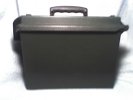|
Hi Bob, Sorry for not addressing your last post specifically, by the time I got back to responding to posts I thought maybe I had addressed all of your questions... obviously not. The key file isn't generated, per se, it's there by default. It is simply a text file with the 16-character key. When you load the firmware to node K6AH-001, for example, you are also copying the default key file to that node. Since all nodes have the key file, all nodes use it. Since all nodes use it... it's really no different than no nodes having it... K6AH-001 plays on the mesh network with everyone else. Now, if you were to change the 16 character key on K6AH-001, it would not be able to play on the mesh network because the first node it connected to, say KO2F-001, would look at K6AH-001's key and see that it doesn't match its own key and as a result would not add K6AH-001 to its routing table. OLSR propagates entries in KO2F-001's routing table to other nodes in the mesh. If it's not in the routing table, it doesn't get propagated. Therefore, K6AH-001 will not be able to play on the mesh. Now the converse will likely be the use case you're interested in: You have a need to "secure" your mesh from unauthorized nodes. You establish a secret 16-character key and load (via PUTTY telnet or SSH) the file with that key. You share the key with other authorized users and they do the same. You now have an isolated mesh that will only route data with others using the same key. You should note: this doesn't stop malicious users from attacking individual nodes... it only stops attackers from using the mesh. When additional users are "qualified" to become nodes on your mesh you share the secret handshake (key) and away they go. I hope I answered your questions. Looks like to might be a pretty good FAQ for the masses as well. Andre, K6AH |
